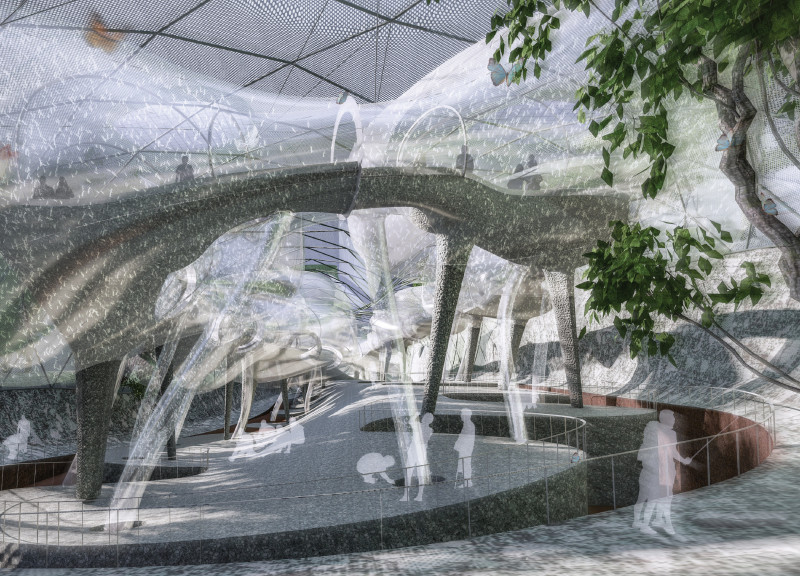5 key facts about this project
At its core, the architecture of this project represents a harmonious blend of modernist principles and sustainable practices. The building is designed not only to serve its functional requirements but also to engage with its surroundings effectively. The overall form is intuitive, allowing residents and visitors alike to navigate the space easily, ensuring that the design serves both aesthetic and practical purposes.
The project functions as a multipurpose facility, accommodating various activities that cater to the needs of the community. It features flexible spaces, including public areas for gatherings, private meeting rooms, and recreational zones, allowing for a diverse range of uses. This versatility is achieved through a progressive layout that encourages interaction while maintaining privacy when necessary. The careful zoning of these areas demonstrates a deliberate architectural approach aimed at enhancing user experience.
One of the most notable aspects of this project is its materiality. The selection of materials reflects both durability and sustainability. Reinforced concrete forms the structural backbone, providing strength and resilience, while low-emissivity glass ensures energy efficiency and natural light penetration. Sustainable timber adds warmth to the interiors, fostering a welcoming atmosphere that resonates with users. The façade demonstrates a thoughtful engagement with local natural stone, subtly grounding the structure to its geographical context and creating a visually appealing contrast with the modern elements.
Unique design strategies are evident throughout the project, particularly in its response to environmental conditions. The integration of green roofs and rainwater harvesting systems exemplifies a conscientious effort to mitigate environmental impact while enhancing aesthetic appeal. These features not only contribute positively to the ecosystem but also reduce operational costs over time—a key consideration in modern architectural design.
The careful attention to detail is evident in the architectural sections, which reveal the complexity of space and form. The interplay of light and shadow is masterfully orchestrated through strategically placed openings and overhangs, enhancing the interior ambiance while reducing reliance on artificial lighting. Such architectural ideas reflect a deep understanding of user comfort and environmental consciousness, attributes that are becoming increasingly essential in contemporary architecture.
Moreover, the project’s exterior design fosters a sense of place. By blending modern architectural language with local vernacular styles, the design remains respectful of its cultural context while also embracing innovation. This duality highlights how progressive design can coexist with traditional influences, enriching the community fabric.
This project invites further exploration into its architectural plans and designs, offering insights into the meticulous thought processes that shaped its development. To fully appreciate its architectural significance, reviewing the architectural sections and details is highly encouraged. This engagement will provide a deeper understanding of how the project embodies thoughtful design principles and addresses the needs of its users, serves the community, and respects the environment. The blend of innovation and tradition creates an architectural narrative that is both compelling and informative, making this project a noteworthy addition to the architectural landscape.


 Guoyu Liu
Guoyu Liu 




















